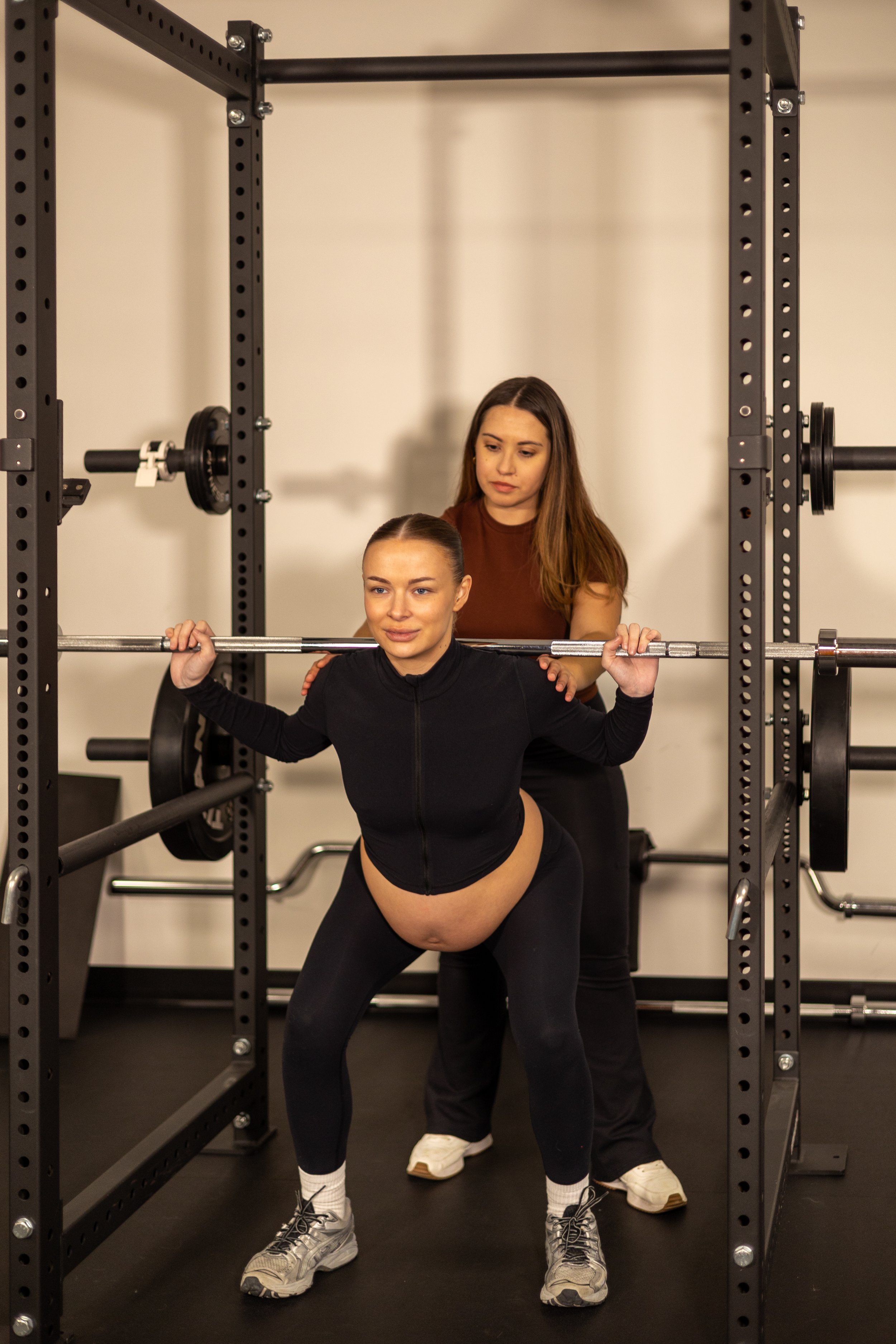
Orthopedic Physical Therapy
Providing trauma-informed physical therapy to help you overcome aches, pains, and injuries,
Begin your journey to recovery with Dr. Ariana Lopez, PT, DPT. I will take the time to understand your specific needs and challenges, crafting a personalized plan that addresses the root of your problems and helps you work toward accomplishing your goals. Treatment typically involves therapeutic exercise and manual therapy techniques such as cupping, myofascial release, and dry needling.
Injuries & conditions I see:
-
Joint pain
Musculoskeletal strains/tears
TMJ dysfunction
Shoulder pain
Spine (neck, thoracic, low back pain)
Hip, Knee, Ankle, Foot Pain
-
Hypermobility and EDS
Long COVID
Chronic pain
Fibromyalgia
Migraines
Arthritis
-
Beginner, professional, and competitive dancers - ballet, modern/contemporary, pole, aerial, and salsa/bachata.
Recreational athletes - runners, climbers, tennis/pickleball players, gymnasts, and weightlifters.

Pelvic Floor Physical Therapy
Your pelvic health matters.
Arlo Physical Therapy & Wellness offers a calm and healing environment for you to address your pelvic health concerns. I treat common pelvic floor concerns like leakage, pain with sex, constipation, and prolapse. I also treat concerns that can be more complex like endometriosis, PCOS, and pain after gender affirming surgery.
Unlike many in-network physical therapy clinics, you will always receive a 1-hour session in a warm and inviting treatment room. You will never be pressured to do an internal pelvic floor exam. We will work together to find a course of treatment that works best for your mind, body, and spirit.
Injuries & conditions I see:
-
Leakage with cough, sneeze, or exercise
Overactive bladder
Frequent nighttime bathroom trips
Incomplete bladder emptying
Chronic UTIs
Interstitial Cystitis
Constipation
Painful bowel movements
-
Chronic pelvic pain
Coccydynia (tailbone pain)
Sacroiliac Joint (SIJ) pain
Pain with sex, pelvic exams with speculum, or inserting tampons
Vaginismus
Vulvodynia
Lichen Sclerosus
Dysmenorrhea (painful periods)
Pelvic and abdominal pain from endometriosis, adenomyosis, uterine fibroids, or PCOS
Pudendal nerve entrapment
Postoperative abdominal pain
Pain after gender-affirming surgery
Pelvic organ prolapse
-
Birth preparation
Pubic symphysis pain
Sacroiliac joint (SIJ) pain
Low back, tailbone, or hip pain
Round ligament pain
Diastasis Recti
Perineal tear recovery
Cesarean scar recovery
Leakage or frequent urination
Difficulty returning to running or exercise

Wellness Services
Dry Needling
Dry needling is a specialized technique used in physical therapy to relieve muscular pain and dysfunction. Thin needles are inserted into tight, knotted bands of muscle called trigger points. When the needle is inserted, it causes a local twitch response. This involuntary contraction followed by relaxation is believed to break the cycle of muscle tightness or spasm and improve pain and mobility.
FAQ
-
Though similar in appearance, dry needling and acupuncture have different goals and foundations. Dry needling targets muscle trigger points to relieve pain and improve function, based on modern anatomy. Acupuncture, from traditional Chinese medicine, aims to balance energy (Qi) by inserting needles into specific points.
-
If you're experiencing persistent muscle pain, tightness, or limited mobility that isn't improving with standard treatments, dry needling may help. A PT can assess whether myofascial trigger points are contributing to your pain. If these trigger points are causing discomfort or restricting movement, dry needling could be a beneficial option to release tension and improve function.
-
Dry needling can be used for a variety of musculoskeletal problems. Conditions include, but are not limited to neck, back and shoulder pain, arm pain (tennis elbow, carpal tunnel, golfer’s elbow), migraines and tension headaches, back and tailbone pain, hip and leg pain, pelvic pain, and pregnancy-related pain.
Myofascial Cupping
This type of manual therapy uses suction cups to gently lift and separate layers of skin, fascia, and muscle. This decompression increases blood flow, reduces muscle tension, and increases tissue mobility. It’s especially helpful for treating tight, restricted areas, improving range of motion, and speeding up recovery from injury or overuse.
FAQ
-
Unlike traditional massage, which compresses tissue, cupping works by lifting and releasing it with sterile plastic/silicone sucction cups.
-
I work with a wide variety of individuals, including those experiencing chronic pain, back/neck pain, SIJ/coccyx pain, sciatica, headaches/migraines, chronic pelvic pain, knee/hip/shoulder/foot injuries, and much more!
-
Most people report bruising as a result of static cupping, which is where I leave the cups on the skin for no more than 10 min. If you prefer not to have bruises or skin marks, I can perform cupping with glide to minimize this. I utilize standard circular cups, but also have heart-shaped cups for people who have trypophobia.
What can I expect at my first physical therapy appointment?
So, you’re ready to book your first physical therapy appointment—but you’re feeling a little nervous because you have no idea what to expect. Don’t worry, you’re not alone! It’s completely normal to feel a little anxious about something new, especially when it involves such a personal area of your health.
A Comfortable & Supportive Conversation
Your appointment will begin with a one-on-one discussion about your medical history, symptoms, and any challenges you’re facing. Whether you're dealing with pelvic pain, incontinence, postpartum recovery, or chronic pain, Dr. Ariana will listen with compassion and without judgment.
A Whole-Body Movement Assessment
Pain and injury are closely connected to your posture, strength, and overall movement patterns. Dr. Ariana may assess your breathing, hip and spine mobility, and how your body moves during daily activities to get a full picture of your musculoskeletal health.
Personalized Treatment Plan
Based on the assessment, Dr. Ariana will develop a customized treatment plan designed to help you meet your goals. This may include exercises, manual therapy, breathing techniques, lifestyle modifications, and education to empower you in your healing journey.
Ongoing Support
Each visit is an hour of one-on-one time with a dedicated Doctor of Physical Therapy. During the course of your treatment, I’ll be available to answer your questions and adjust your plan along the way.
Let’s work together!
Send me a message to request a visit or ask a question! I am currently taking new patients and look forward to helping you.








